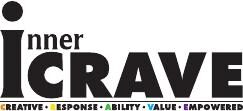
Alzheimer’s disease affects about half of Americans in their 80’s
- It’s from old age and genetics.
- Chicago health and aging project looked at dietary records found saturated fats (dairy, bacon, etc.) and trans fats should be avoided not only for Cholesterol and heart disease reasons but also because they affect the brain.
- Researchers in Finland went further studying the condition called “Mild Cognitive Impairment” with regard to mental lapses, studying over 1,300 adults, finding memory failure from the eating these saturated and trans fats.
- So these studies have found if you are avoiding these bad fats, even if you have the “bad” genes, your risk of developing memory problems was cut by 80%. Therefore, the main point here is genes are not destiny.
There are metals in our brain such as iron and copper in our brain that come from food.
- Iron and copper oxidize in your body and as they do that, they cause the production of free radicals, which are molecules swimming around in the bloodstream and get into the brain.
- We get these metals in our body from things like frequently using a cast iron pan, or copper pipes in our house that water is stored in, eating meat.
- Iron may be good at small amounts but if you have too much, it becomes toxic.
- Vitamin manufacturers throw in iron and copper thinking we need these, not recognizing we already are getting enough in foods, and if you add it to your supplement, you are getting too much.

Re-source: Reinforcement
the action or process of reinforcing or strengthening
Vitamin E is the needed fire extinguisher to help with the free radicals that are like sparks in our brain.
- Vitamin E is an antioxidant found in spinach, mangos, and especially in nuts and seeds.
- Studies showed that people getting 8 ml per day cut their risk of Alzheimer’s by about half compared to people getting less than that.
- Nature has 8 forms of vitamin E, but if we put it in our supplement pill, we can legally call it vitamin E if it only has 1 form. And if you’re eating too much of only one form of vitamin E, it reduces your absorption of all the others.
- So, you want to get it from food. That’s the form that nature has designed for us and that’s the form that we’ve evolved with.
- Use nuts as a flavoring, not as a snack food
Researchers from the University of Cincinnati not just studied saturated and trans fats, and vitamin E, but studied color in foods.
- Studied people with memory problems who were asked to have grape juice and blueberry regularly found their memory and recall were better within 3 months.
- Grapes and blueberries sit on the vines and bushes exposed to all the elements such as the sun. That color happens to be powerful antioxidants. If you consume them, they go into your bloodstream.
- If you look at the colorful foods, there is an important lesson there for us. The orange color of a carrot, red color from a tomato, etc. are easily recognized by the brain and are great for us.
Fruits, grains, legumes, and vegetables should be the staples, but there is also something to say about exercise.
- At the University of Illinois, researchers studied brisk walks and its positive effects on the brain and memory.
- They suggested we do a 10 min. walk 3 times a week. And then next week, lets do a 15 min. walk, and keep increasing 5 min. a week until we get to 40 min. A 40 min brisk walk, 3 times a week is all you need to improve memory and reverse brain shrinkage.
We can change our diet and exercise to protect our brain and live longer healthier lives.
craving and resource from “Power Foods for the Brain” by Neal Barnard (TEDxBismarck)
